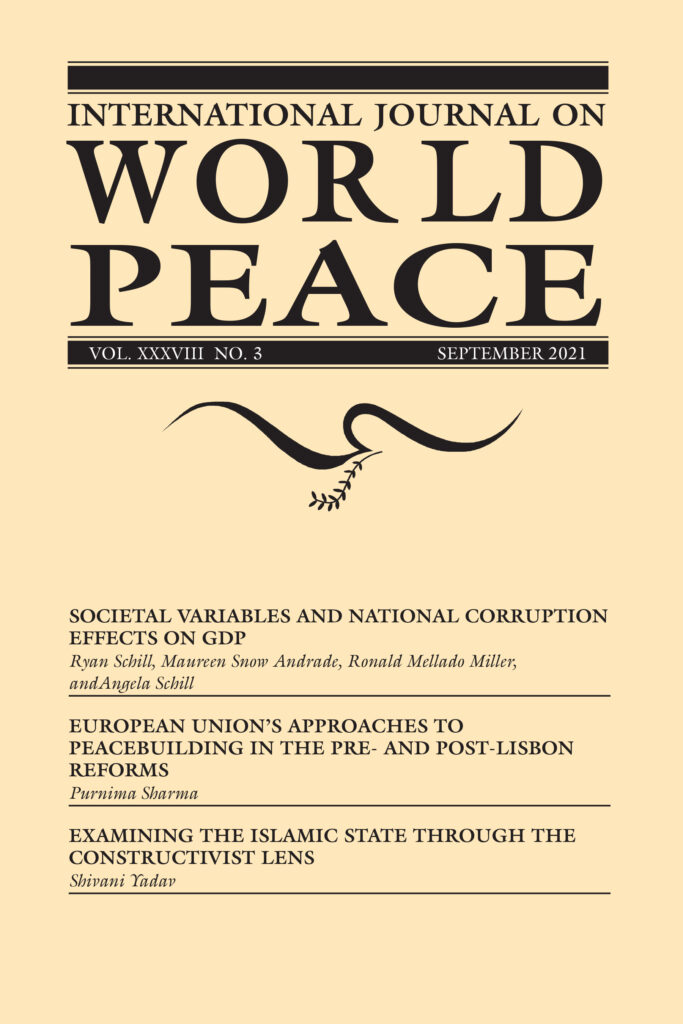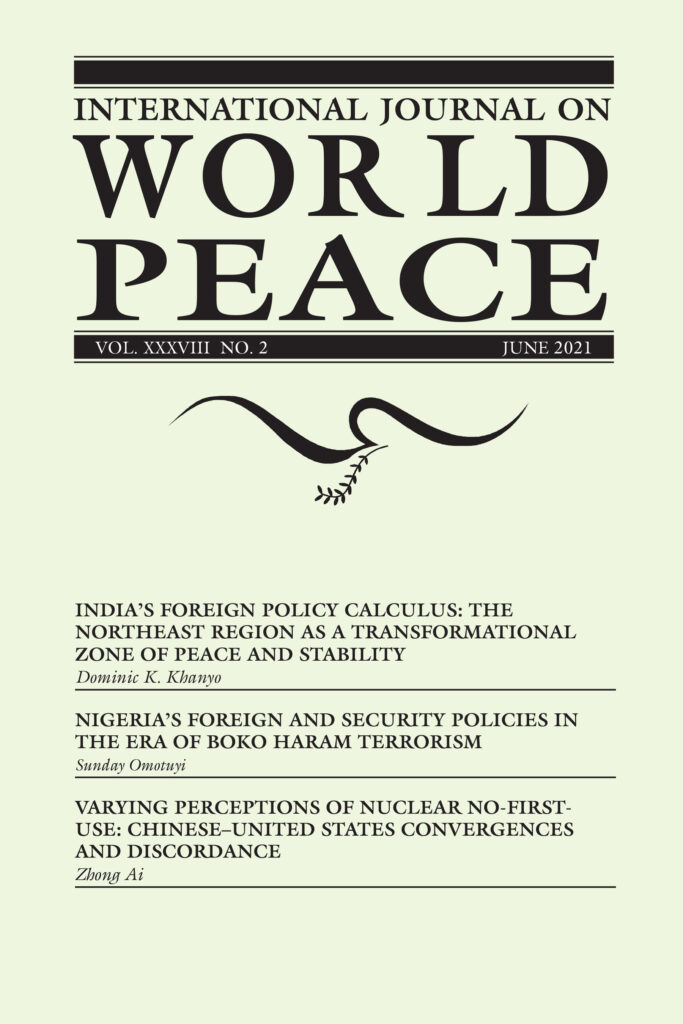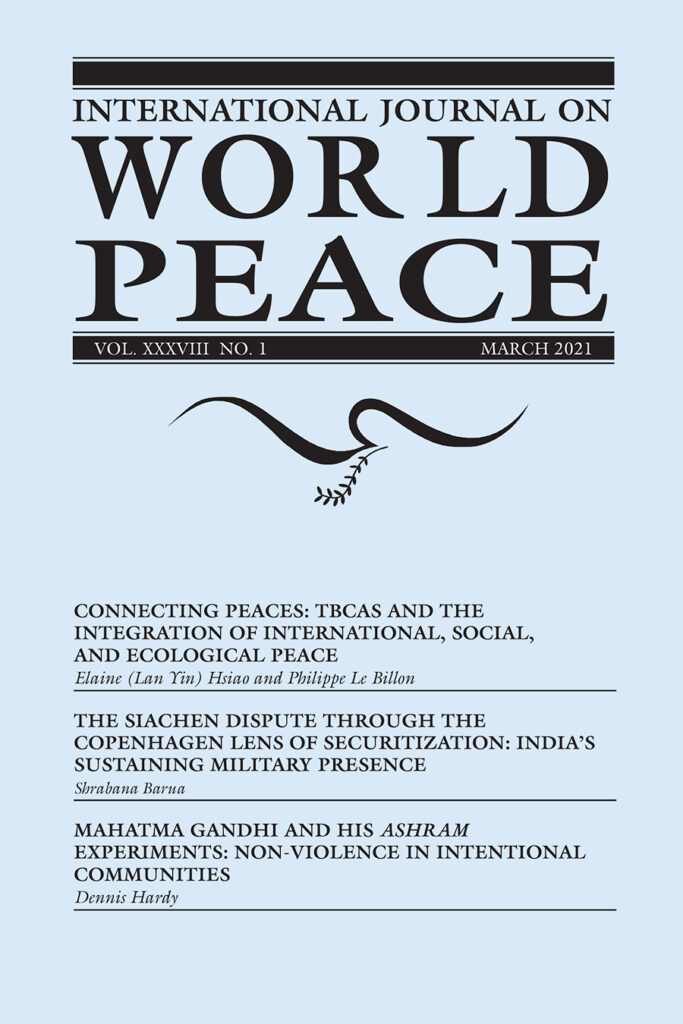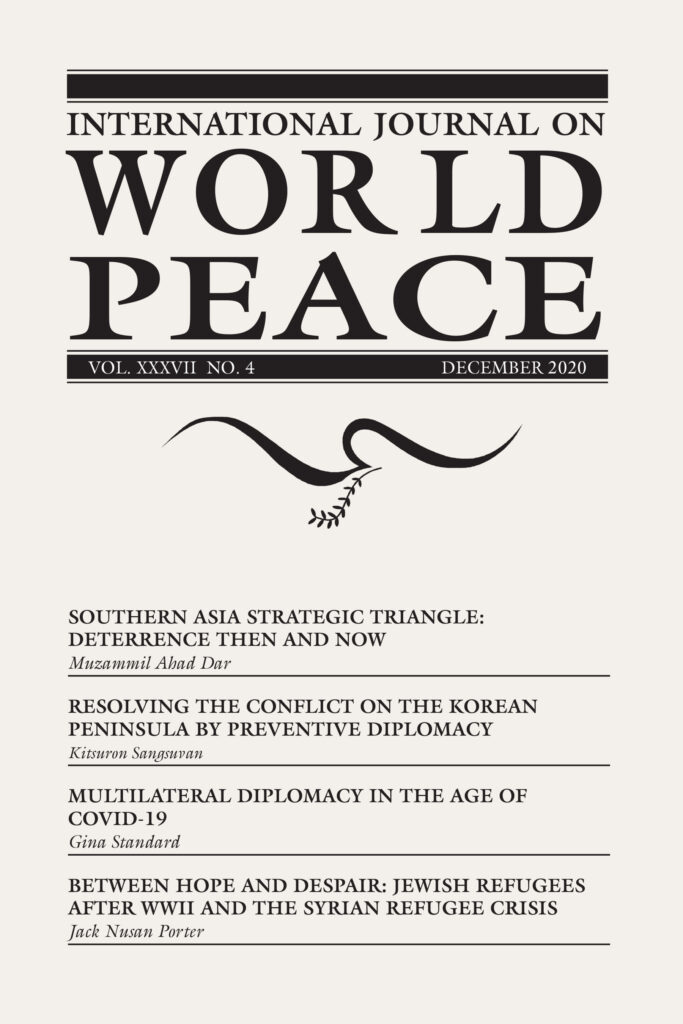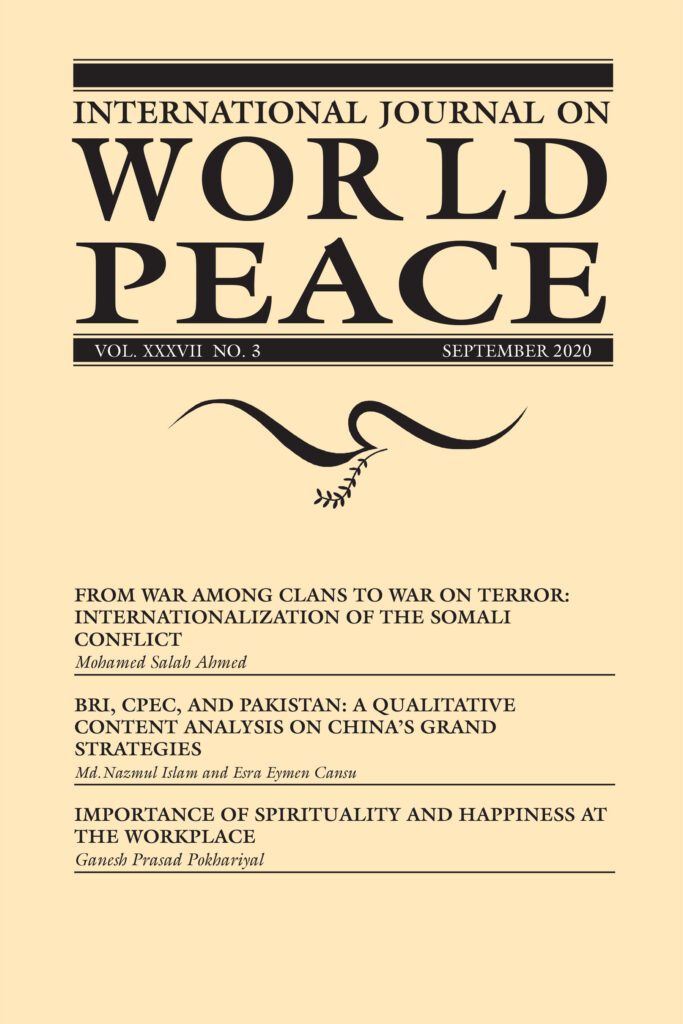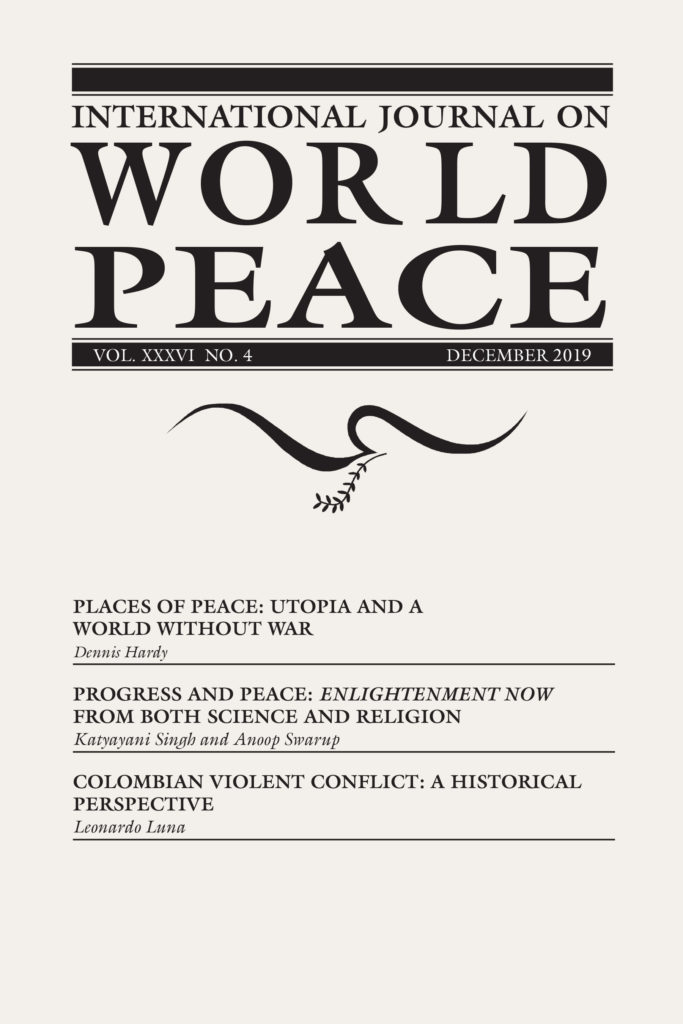Introduction to IJWP, September 2021
Taking or producing. These are two ways people can live. Wars result when people try to live by taking. Civilization is possible when people are productive. Corruption is a form of taking. In politics, corruption comes in two forms: bribery and the misuse of public funds. Bribery is when a public official or political party takes money from a moneyed interest to gain a legal or economic benefit at the expense of others. “Pay for play” and selling one’s office describes this. Misuse of public funds is when public officials, legislators, political parties, or states spend money from the treasury that is not approved by a consensus of the taxpayers. This is a form of embezzlement or theft.
In modern democracies, corruption has become systemic. Legislative practices like “pork” attached to bills make laws that circumvent the concept of a “consensus of the people.” In the United States, political parties, corporations, NGOs, and other groups with money and political influence hijack the treasury through such corrupted structural mechanisms. Individuals are given a “choice” between candidates political parties have endorsed and, once elected, the candidate generally represents the will of the party rather than the constituents. Such a government no longer derives its just power from the consent of the governed.
In our first article, “Societal Variables and National Corruption Effects on GDP,” the authors look at the impact of government corruption on GDP. GDP has been used as a traditional indicator of the standard of living, but only represents this accurately for middle-class societies, where ownership of businesses is spread out across the society. When production is owned by a few wealthy individuals and there is a huge wealth gap, GDP can increase while the mean standard of living decreases. However, since GDP indexes are the current data available the authors used these indexes as an indicator of national prosperity with caution.
Their research reveals some interesting results. They found that when corruption is low or mild, private charity and private initiatives increase to offset the effects of corrupt government spending. Productive people will voluntarily do for society what the government fails to do. “Charitable giving has been associated with entrepreneurship. In the U.S., the average donation for entrepreneurs is 50 percent higher than for non-entrepreneurs.” The authors speculate entrepreneurs are stimulated by personal interaction to help those around them with personally targeted assistance. Large corporations and governments, on the other hand, are impersonal, lacking the human relationships that efficient charity requires.
Ironically, low levels of corruption can have a stabilizing effect on society. The authors suggest societies with a low GDP can move to higher GDP when entrepreneurs bribe officials in order to get their production underway. I suspect that such “corruption” is related to small bribes to bureaucrats to get licenses to produce, and not government redistribution schemes to third parties.
The authors say that the “perception of corruption,” rather than actual corruption correlates with the level of peace. When the perception of corruption is low people tend to see the government as legitimate and there is more social peace. “Corruption feeds into beliefs about injustices and other grievances related to power and government, and corrupt practices may be interpreted as ethnic discrimination, particularly if tax revenues are distributed to social identity groups rather than individuals.” As the perception of corruption increases and people believe others are benefitting at their expense, social peace is reduced. “There is a threshold of corruption, that once breached, allows corruption to play a much larger role in the overall decrease of peace within a country.”
Our second article, by Purnima Sharma, is the “European Union’s Approaches to Peacebuilding in the Pre- and Post-Lisbon Reforms Period.” The article looks at the evolution of the European Union (EU) from a loose federation of sovereign states to the form of a state with a military capable of peacekeeping and peacebuilding in other countries. Initially, the EU acted under the umbrella of the United Nations, and later the North Atlantic Treaty Organization. Then, it established its own European Security and Defence Policy in 1999. While its effectiveness as a security actor is debatable, there is no denying that it has become an international player after sending civilian and military missions and operations to Congo, Afghanistan, Somalia, Iraq, Myanmar, Palestine, and other regions.
Because it is not a centralized state, the EU does not yet have the means to create an empire. “Peace is the core value of the EU; and since its creation, it has three main goals: peace, democracy, and prosperity.” It has developed an “integrated” approach to peace by promoting political stability, normative values, and economic development. However, Sharma argues that this approach is more “vertical” than “horizontal” and suffers from a lack of communication between its various components. She believes that the EU needs to learn how to function better in complex social settings.
Our third article, “Examining the Islamic State through the Constructivist Lens,” argues that traditional realist and liberal approaches to foreign policy fail to provide an adequate understanding of the forces behind the creation of the Islamic State (IS). Constructivism focuses on the importance of ideas and norms in shaping national interests and identities. These factors remain “invisible” to traditional analyses of terrorism. Labeling acts as terrorism shows how they fit into the worldview of the analyst but does little to shed light on the motives of Islamic State actors.
“Constructivism sees the world as socially constructed. This is contrary to realist and liberal theories that focus on material factors like power, military, and economic capabilities.” Identity crisis was recognized as a major factor leading to the radicalization of IS members. Relative deprivation and grievances lead to disillusionment with their current life and attracted them to the promised caliphate on the territory captured by IS in Iraq and Syria.
Most of the people who traveled from Europe to Syria to join IS were English speaking, and from highly educated and economically strong backgrounds. Studies have debunked the idea that terrorists were mainly illiterate people. A 2015 World Bank Report report draws a causal link between lack of economic and social inclusion and the propensity to radicalization and extremism. This relates to systemic factors in the countries the recruits left. One issue is perceived socio-economic deprivation, or not getting a job with the value one expects. Normative factors like hedonism, corruption, and value relativism contribute to a sense of meaninglessness.
“Constructivism considers terrorist actors to be products of discourse and proposes a shift from an actor-centered to a discourse-centered perspective.” Using traditional force to shrink the territory of the Islamic State fails to address these issues and merely pushes “terrorists” underground. To counter such terrorism, strategies should (1) address the issue of identity and discredit the ideology that IS propagates, and (2) address the real or perceived socio-economic inequalities and injustices and cultural values that exist in the societies IS recruits abandoned.
Governments are not motivated to examine their own corruption and structural injustices. States (or political parties in power) tend to use their power to purge those who oppose them and they resist the transparency that would expose corruption or unethical legal structures that cause illegitimacy. This connects to analysis in our first article that links corruption and other social factors to the study of peace within societies. Like the IS, modern populist movements on both the left and the right, and the Brexit withdrawal from the EU, are protests against state or supra-state governments that fail to examine their own structures and use of power.
Constructivism is a form of building that follows the vacuity of the “deconstruction” of culture. Two forms of “constructivism” are being promoted. The first is a naive ideology based on the rejection of the entire past, ungrounded in the basic principles that undergird the world’s major civilizations. Marxism-Leninism and Critical Race Theory fall in this camp because they too refuse self-examination and open discussion. Our book review of Cynical Theories attempts to lay out the problems with such theories.
The second form of “constructivism” is evolutionary rather than revolutionary. It does not reject the entire past after critically deconstructing it, but eliminates falsified policies and reaffirms those policies that have increased knowledge, social cohesion, security, economic development, and sustainability. This would be a “progressive” approach that eliminates corruption without “throwing out the baby with the bathwater.” The idea of “cultural evolution” is outlined by Steve McIntosh in Developmental Politics. A real constructive discourse would integrate values learned through social evolution with the demands of new social realities. This would include open public discussion, consensus, transparency, and the scientific study of governance rather than the utopian assertion of power and the corruption and social dysfunction that follows from it, destroying entire societies or causing the deaths of millions.
Gordon L. Anderson, Editor



